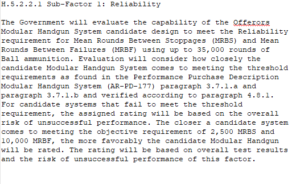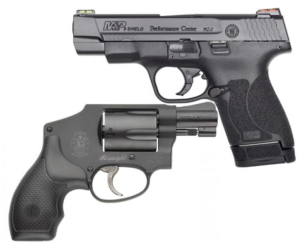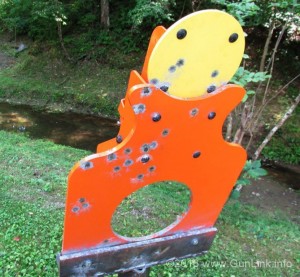Concealed Carry Basics Part 1: Choosing the Right Firearm
Finding the right pistol to carry
 This is the first installment in the Concealed Carry Basics series. Carrying a firearm on your person is as simple as… well, as carrying a firearm on your person. It is not rocket science – people have been carrying firearms for protection since there have been firearms – but there are pieces of information that you pick up along the way that make the practice easier, safer, and more effective. With a couple combined decades of carry experience among us, the GunLink team hopes to share some of that information with you to help make the process easier.
This is the first installment in the Concealed Carry Basics series. Carrying a firearm on your person is as simple as… well, as carrying a firearm on your person. It is not rocket science – people have been carrying firearms for protection since there have been firearms – but there are pieces of information that you pick up along the way that make the practice easier, safer, and more effective. With a couple combined decades of carry experience among us, the GunLink team hopes to share some of that information with you to help make the process easier.
This article is not a primer on what specific firearm is best or which one you should get. Rather, it lays out a number of considerations that you need to make when choosing the best firearm for you and your situation.
If you are starting from scratch, head over to Firearms 101 for the basics on what firearms are, how they work, and commonly used acronyms.
Technically, the first thing you need is the mindset – the decision to carry a firearm in the first place – but the first three parts of this series are focusing predominately on the gear, with mindset coming in Part 4. For now, let’s presume that you have decided that you want to carry a firearm for protection… what next?
What NOT to Do
First, there are a few things that you should not do when choosing a sidearm to carry.
You should not choose your firearm based solely on what you see in the media. To be sure, there are plenty of really cool, sexy glamour shots of the latest and greatest guns on social media. Being brand new looking cool are not good determining factors for choosing a reliable, effective means of self defense. Being heralded as the next big thing, the “Glock killer,” the best thing since sliced bread, etc. does not necessarily make it a good firearm. Keep in mind that many reviews of the new hotness are tinged with the color of money – from free guns to outright cash payments for good reviews (only), take social media gun reviews with a grain of salt. Even if main stream media (news outlets, etc.) could tell one firearm from another, for the most part they think all guns are bad, so don’t bother. And if you can’t figure out that what you see in most movies is fake, maybe firearm ownership isn’t for you… I’ll take two infinite-capacity clips and a box of that ammo that blows bad guys in half, please.
You should also not base your decision solely on what someone else tells you to get, whether it’s your cousin, husband, wife, or Joe GunCounter – especially if it’s Joe GunCounter. I’ve seen a lot of people end up with firearms that just aren’t right for them because Joe thinks his customers (usually females) are too inept to work anything other than a .38 revolver, too weak for anything more powerful than a .22, or can’t handle the recoil of anything other than a pocket .380 that they can’t manipulate the slide on. Sure, there are cases where those might be the best or only option, but it usually isn’t the case.
Lastly, don’t choose your pistol solely on budget. There are some decent pistols in affordable price ranges, but there is also a lot of garbage there as well. This is something that you will be relying on to protect the life and safety of you and possibly your loved ones. If you are really, really strapped for cash and think you need to start carrying ASAP, do some research and find out which affordable firearms will be reliable enough for you. This will involve some math on your part to figure out how much effectiveness and reliability you are willing to trade off to save some money. You don’t need to break the bank to buy some super expensive firearm, but often most people might be better served to skip a few trips to the restaurant and theater and put that money toward a little better pistol.
So How DO I Choose a Firearm
Right off the bat, you should understand that any pistol is a compromise. Of course, if you knew that you were going to get into a gun fight on a certain day at a certain place, you would just not be there. If you did find yourself in such a situation, a rifle and some friends with rifles would be a great choice – albeit too cumbersome to lug around. If you poke around, you should be able to find some government data on survivability of handgun wounds (hint: you have pretty good odds). Handguns are carried because they are easy to carry and are generally effective for protecting yourself from most street crimes, not because they are the be-all-end-all of defensive tools.
Odds are, you will never need to use your concealed carry pistol to protect yourself or your loved ones. Choosing the right pistol is a very personal matter and involves doing some thinking on your own personal situation. Some of the things to consider are reliability, durability, capacity, caliber, ease of concealment, ease of carrying, effectiveness, budget, how comfortable you are with carrying and shooting it, and – importantly – how well you shoot it. For the most part, you will not find a pistol that scores a 10 for you in all of these areas, so you will probably have to make some trade-offs.
Reliability and Durability
This should be high on your list. Odds are astronomically in your favor that you will likely never have to use your concealed carry weapon. However, if you do, you NEED it to work. Things have gone very badly and you have to be able to count on it 100% to get you out of whatever jam in which you find yourself.
 Most modern handguns from reputable manufacturers should score high in both of these factors. Companies that turn out nothing but lemons would (in theory) not last long in the industry. Choose a handgun with a good track record of both. This is where a little research goes a long way. There is no shortage of people carrying crummy guns for whatever reason led them to purchase and carry them. There are plenty of firearms on shelves that are interesting to have in your collection, that look cool, are fun to shoot, are cheap, etc. There is a market for such firearms. Just because a handgun exists does not make it a good choice to protect yourself.
Most modern handguns from reputable manufacturers should score high in both of these factors. Companies that turn out nothing but lemons would (in theory) not last long in the industry. Choose a handgun with a good track record of both. This is where a little research goes a long way. There is no shortage of people carrying crummy guns for whatever reason led them to purchase and carry them. There are plenty of firearms on shelves that are interesting to have in your collection, that look cool, are fun to shoot, are cheap, etc. There is a market for such firearms. Just because a handgun exists does not make it a good choice to protect yourself.
In general, if a first-world police or military force carries it or the name comes up constantly in “what do you carry?” discussions, there is probably a good reason for that. If the slide says something like Glock, Smith & Wesson, Sig Sauer, FNH, or another big name like that, it is likely good-to-go. There are plenty of good ones that you might keep hearing about, and plenty of them are great guns that you can find plenty of people vouching for. Just keep in mind that “data” is not the plural form of “anecdote.” This is math that you have to do on your own – is 1 failure out of 100 good enough for you? Is 80% reliability (20 failures out of 100) acceptable?
As an aside, the RFI issued for the US Army/USAF XM17 Modular Handgun System called for designs with ratings of at least 2,000 mean rounds between stoppage (MRBS), 10,000 mean rounds between failure (MRBF), and a 35,000-round service life. While the average concealed carrier might not set such a high bar, the idea that one could get such performance from the Phoenix Arms .25ACP that they plunked down $120 for is simply not realistic.
Capacity
 Again, you will very likely (and hopefully) never need to draw your concealed handgun at all. If you do have to, there are decent odds that this alone may stop the threat. Prevailing data on rounds fired in a defensive gun usage shows pretty low numbers. At the same time, the old adage goes that “nobody ever wishes they had less ammo in a gun fight.”
Again, you will very likely (and hopefully) never need to draw your concealed handgun at all. If you do have to, there are decent odds that this alone may stop the threat. Prevailing data on rounds fired in a defensive gun usage shows pretty low numbers. At the same time, the old adage goes that “nobody ever wishes they had less ammo in a gun fight.”
Available firearms range from one- or two-shot derringers through 5-7 round pocket pistols and revolvers to 10 round sub-compacts up through 17-20+ round duty-sized weapons. Caliber makes a difference too. A similarly sized magazine will carry a lot fewer .45ACP rounds than .22lr rounds.
As an example, the bottom magazine shown in the photo to the left holds 10 rounds of .45ACP (and its pistol weighs nearly 32 ounces empty) while the top mag holds just six rounds of .380ACP (and its pistol weighs under 10 ounces). 10+1 rounds of 230 grain .45 ammo adds another nearly 6oz just in projectiles (not even counting the shells, powder, and primers) while 6+1 of .380 adds just just over an ounce of projectiles. Which would you be more likely to want to lug around on your hip all day – an extra two and a half pounds, or ¾ of a pound?
How many rounds should yours carry? I don’t know – this is something else that you will have to consider. Do you live on a ranch where worst case is a canebrake rattler or lone big cat, or do you frequent large urban centers where team-player street crime is not uncommon? Do you have the physical real estate on your person to carry a larger, high capacity firearm? If you get the larger pistol, will it be so cumbersome that you can’t or won’t carry it?
Caliber
As mentioned above, pistol rounds are not especially great at creating terminal wounds. Ballpark shop talk is something like 75%+ of handgun wounds are survivable. Also, movies are fake and caliber zealots are just stuck on their pet caliber – in reality you probably won’t find a pistol round that performs in the real world how the one-shot Golden Gun performed in 007 Golden Eye on N64.
Lucky Gunner has an excellent resource in their Ammo Lab Testing that shows how different rounds from different manufacturers perform in ballistics gel that approximates human bodies. Surprise – A little 95-grain .380ACP round pokes a smaller hole and creates a smaller permanent wound cavity than a 230-grain .45ACP round!
Have you ever head someone say “Well I wouldn’t want to be shot by (insert whatever caliber here)?” Truth be told, if I had my druthers, I wouldn’t really want to get shot with our Bug-A-Salt fly gun – it stings. I certainly don’t want to be shot with any caliber of an actual firearm, whether it’s a .22 short or a 10mm. Most bad guys are predators of opportunity – they want easy pickings. A gun might scare them off. Then again, it might not. You might have to shoot them (stay tuned for Part 4). Your caliber and projectile choice (see Part 5) might influence said bad guy’s decision to continue attacking or run away (or to collapse in a lifeless heap).
This is another trade-off you will have to make. Not only does caliber impact the effectiveness of the round, it often impacts the size and capacity and type (e.g. revolver vs semi-auto) of the firearm. You will need to decide what combination of size, capacity, effectiveness, and shootability (think recoil management, follow-up shots, etc.) are acceptable for your individual situation.
Revolvers vs Semi-Autos
 Both revolvers and semi-automatic handguns can certainly be viable options for carry, but some considerations need to be made. However, as alluded to above, all too often we see people being steered to one or the other for all the wrong reasons.
Both revolvers and semi-automatic handguns can certainly be viable options for carry, but some considerations need to be made. However, as alluded to above, all too often we see people being steered to one or the other for all the wrong reasons.
For the most part, revolver operation does boil down to “point and shoot” functionality. There is not much in the way of moving parts that the user has to interact with other than the trigger – no slide to manipulate, often no manual safety, generally no hammer to manipulate these days, no magazines to manage. Pull it out, point it, and pull the trigger (and, for revolvers, the “pull it out” part may even be optional). Simplicity of use, however, does not mean simplicity of design – revolvers have a relatively intricate clockwork that needs to remain in good working order to function.
That also comes with limitations. Unless you spend most of your waking hours practicing, the big one will be slower reloads – which goes hand in hand with the other big one: lower ammo capacity. Generally, most carry revolvers will give you 5 or 6 rounds and reloading means swinging out the cylinder, emptying spent shells, and replacing them one-by-one or with some type of speed loader. This is typically slower than swapping magazines, which usually also hold more rounds in the first place and are easier to carry than revolver reload gadgets.
Ease of Carrying and Concealment
Face it, carrying a firearm on your person isn’t as easy as not carrying a firearm. Some firearms are worse than others, with common CCW pistols ranging anywhere from a few ounces to well upwards of a pound or two. Some of them have more rounded edges while some have pointy corners. Not one of them is soft.
Smaller firearms can be easier to carry since they are smaller and may likely provide more carry options (such as pocket carry or easier IWB carry). Again you run into a potential trade-off situation between a small caliber and low capacity handgun that is very easy to carry versus a larger firearm that might be more of a burden to carry.
Of course, the smaller firearms will also have the tendency to conceal better as well, if that is something that you need to consider. I am in an state with licensed concealed carry and both unlicensed concealed and open carry and nobody cares if the person behind them in line at the Winn Dixie spots their piece (or is packing one of their own). Not all areas are like that and it may be important that you keep yours well hidden for your situation.
The big thing here is that if you get one gun to carry and it is too difficult or uncomfortable to carry, or if you have to keep it hidden and it keeps printing (showing its outline through your clothing) or coming uncovered, you are likely to not carry at all. The gun sitting in your safe at home isn’t going to get you out of a pickle. You can have the best, most effective firearm in the world and it won’t do you a bit of good if you don’t carry it, so you have to find one that works for your carry method.
Ease of Use and Shootability
 This point encompasses several of the other points in this article. Ease of use means ease of carrying the pistol, but it also means how well it fits your hand, how well you can manipulate the controls (such as working the slide, moving the safety on and off, etc.), and how well you shoot it.
This point encompasses several of the other points in this article. Ease of use means ease of carrying the pistol, but it also means how well it fits your hand, how well you can manipulate the controls (such as working the slide, moving the safety on and off, etc.), and how well you shoot it.
After revolvers, one of the most common carry guns that Joe GunCounter may direct ladies and older customers toward are micro-sized .380 pistols. It is often the case that both of those are terrible choices for those demographics. Often, both of these types of handguns have heavy double-action triggers that are difficult to pull. Further, physics dictates that less slide mass to counter recoil on small pistols generally means a stiffer slide spring, which makes manipulating the slide to load or unload the firearm, clear jams, and maintain the firearm more difficult.
Ease of use also means ease of getting the gun into the fight. You must consider how you will carry it as well as the physical characteristics of the firearm. Will you be able to get a good firing grip on it from its concealed location? This can be more difficult with deep concealment or off-body carry methods and a poor fitting grip makes things tougher as well. Sharp corners, exposed hammer spurs, tall sights, and other features may also impede your draw – having your pistol snag and get caught up in your shirt or purse is bad news if you need your CCW in a hurry.
A lightweight, heavy caliber pistol is also going to have some pretty hefty recoil and not necessarily be fun to shoot. You should be proficient with your carry weapon and that means putting in practice time. Shooting is a perishable skill and you should practice frequently with your carry gun. That means safe practice carrying it, drawing it, and shooting it. Put in the time shooting at the range and put in the time practicing your (unloaded) draw.
What about manual safeties? A thumb safety can provide peace of mind in that it might help you be less likely to screw up and end up with a negligent discharge. On the other hand, it can add something else to your to-do list of getting your gun into the fight: clear cover garment, grip pistol, draw pistol, [safety off], get on target, shoot. In high-stress situations, will you have the fine motor skills or cognitive presence to click off that extra lever before stopping the threat?
Budget
Yes, we said don’t let budget be the sole determining factor in choosing your carry weapon, but you don’t have to abandon fiscal responsibility altogether.
Just because a firearm costs more does not necessarily make it better and, conversely, just because one costs less than another does not necessarily make it worse. Firearm costs vary greatly and, sometimes you are paying just for a name (for better or worse), features that you may not need, or cosmetic features that won’t affect anything other than aesthetics. As mentioned above, you don’t want to cut too many corners at the expense of sacrificing reliability, but you don’t need to break the bank to get a good carry gun.
Also keep in mind ammo costs when selecting the caliber of pistol that you will carry. Common, readily available 9mm ammo is probably about the most affordable caliber that is suitable for defense, followed by .45ACP while .380ACP, .38spl, .357 magnum, and .40S&W tend to cost a bit more, but the types of firearms that chamber those rounds run a pretty wide range. Some rounds may be marginally more or less effective than others but, for the most part, quality modern defensive ammo in any of these calibers should be reliable and effective.
Again, you have to do the math and consider all of the points in this article together when choosing your carry pistol.
TL;DR – So Which Pistol Should I Carry?
This is, of course, a decision that you have to make for yourself given your own situation. All of the above points are all important considerations that you must take into account when choosing your carry gun. Everyone is different – from different locations to different hand sizes to different physical attributes to different budgets.
If you read any single section of this article, it should probably be the section on what NOT to do. If you walk into your local gun shop, plunk down some cash, and walk out with whatever pistol someone else arbitrarily thinks is best for you, you have decent odds of ending up with a pistol that you wont like for one reason for another and you may end up with one that just doesn’t work for you. If that leads to you not being able to effectively use the firearm, or not carrying it at all, you may as well have not purchased it for CCW in the first place.
Get the concealed carry pistol that checks all of the boxes for you as an individual.









